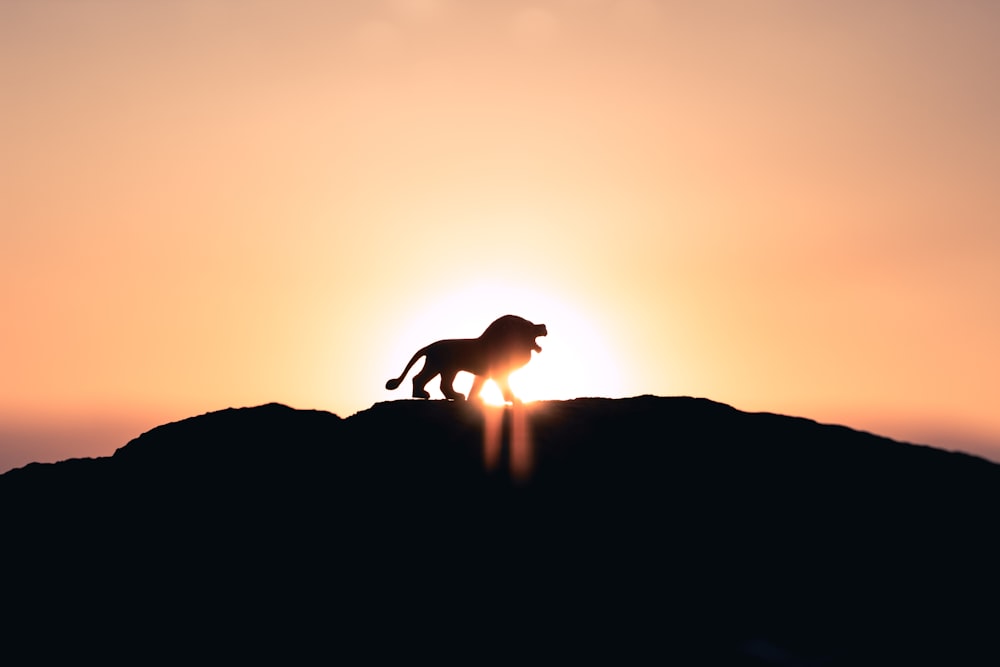The lion, known as the king of the forest, is a majestic and powerful creature that has fascinated humans for centuries. With its regal appearance and fearsome reputation, the lion captures our imagination, symbolizing strength, courage, and nobility. While many of us are familiar with the basics of the lion’s behavior and habitat, there are several intriguing facts about this royal beast that are not known to everyone. In this article, we will delve into 12 fascinating facts about the lion, shedding light on its extraordinary characteristics and shedding some misconceptions along the way.
The Lion’s Roar: Magnificent and Terrifying
The lion’s roar is a signature sound of the African savannah. But did you know that a lion’s roar can be heard up to five miles away? This mighty vocalization serves multiple purposes, including marking territory, communicating with other pride members, and announcing their presence to potential rivals. The deep, resonating roar strikes fear into the hearts of both prey and fellow predators.
Sociability: The Pride’s Bond
Lions are notorious for their social nature. They live in prides, which consist of multiple females, their offspring, and a few males. The females are usually closely related, forming the core of the pride. The males, on the other hand, often join and leave prides in search of new opportunities to mate and establish their dominance. This complex social structure ensures protection, successful hunting, and propagation of the species.
Hunting Strategies: A Team Effort
Contrary to popular belief, it is not just the male lions who are responsible for hunting. Lionesses are the primary hunters in the pride. They work together, utilizing their exceptional teamwork and communication skills to bring down large prey, such as buffalo and zebras. While the males may occasionally join the hunt, their immense size and strength are better suited for fending off rival males and protecting the pride.
Speed: A Surprising Talent
Despite their large size, lions can reach impressive speeds. They are capable of running at speeds of up to 50 miles per hour in short bursts, allowing them to catch their prey by surprise. This combination of strength, agility, and speed makes them formidable hunters in the African wilderness.
King of the Jungle: A Misconception
While the lion is often referred to as the “king of the jungle,” it actually resides in grasslands and savannahs, not dense forests. Lions prefer open spaces where they can observe their surroundings and spot potential prey from a distance. This distinction is important as it dispels the popular myth and gives a more accurate picture of the lion’s natural habitat.
The Mane: A Symbol of Power and Vitality
One of the defining features of male lions is their majestic manes. Beyond their aesthetic appeal, manes serve as a visual display of power, vitality, and dominance. The darker and fuller the mane, the more attractive the male lion is to potential mates. It also acts as a form of protection during territorial disputes, providing a physical barrier against rivals’ attacks.
Nocturnal Nature: The Lion’s Preference
Lions are primarily nocturnal creatures, preferring to rest during the day and hunt at night when temperatures are cooler. Their specialized vision is adapted to low-light conditions, giving them a distinct advantage over their prey. By conserving energy during the day, lions are able to remain active and alert when it matters most – during the hunt.
Powerful Paws: Weapons and Tools
The lion’s paws are not only powerful weapons but also invaluable tools for survival. Equipped with retractable claws, lions can swiftly unsheathe them during confrontations with rivals or prey. Their paws also aid in gripping and bringing down fleeing prey, giving them a significant advantage in the hunt.
The Circle of Life: Lions and Their Cycles
Lions are integral to maintaining the delicate balance of the ecosystem. By preying on herbivores, they control population sizes, preventing overgrazing and the depletion of resources. Their presence also acts as a deterrent to excessive herbivore movements, thus contributing to the overall health and stability of the ecosystem.
Endangered Status: A Crucial Conservation Effort
Despite its iconic status, the lion faces numerous threats in the modern world. Habitat loss, poaching, and conflicts with humans pose significant challenges to the survival of these magnificent creatures. Conservation efforts, such as protected reserves, anti-poaching measures, and community engagement, are crucial in ensuring the preservation of lion populations for future generations.
The Lion’s Legacy: Symbolism and Cultural Significance
Throughout history, the lion has held a special place in human culture. It has been revered as a symbol of power, courage, and nobility in various societies around the world. From ancient Egyptian art to modern-day logos, the lion’s image continues to captivate and inspire. Its legacy as the king of the forest endures, reminding us of the importance of conservation and our interconnectedness with the natural world.
In conclusion, the lion’s majestic presence and fascinating characteristics make it a creature of awe and wonder. From its thunderous roar to its intricate social structure, the lion embodies strength, resilience, and the delicate balance of nature. By understanding and appreciating these intriguing facts about the lion, we can better protect and preserve these regal beasts for generations to come.

